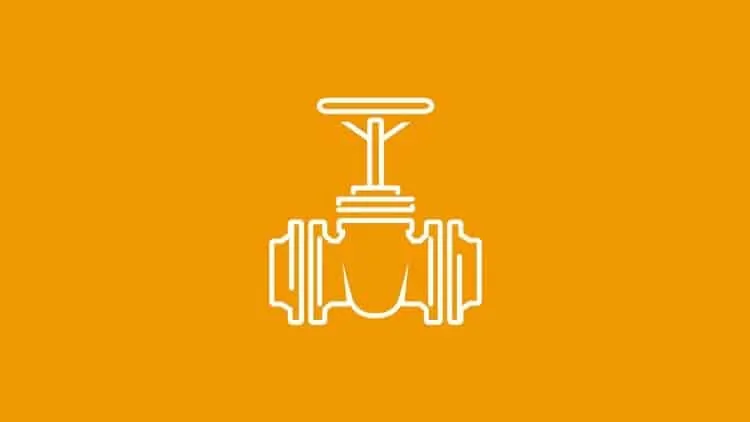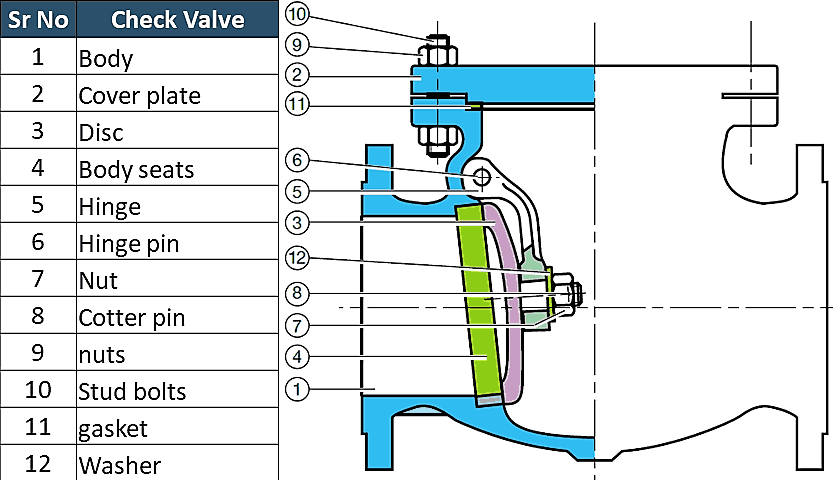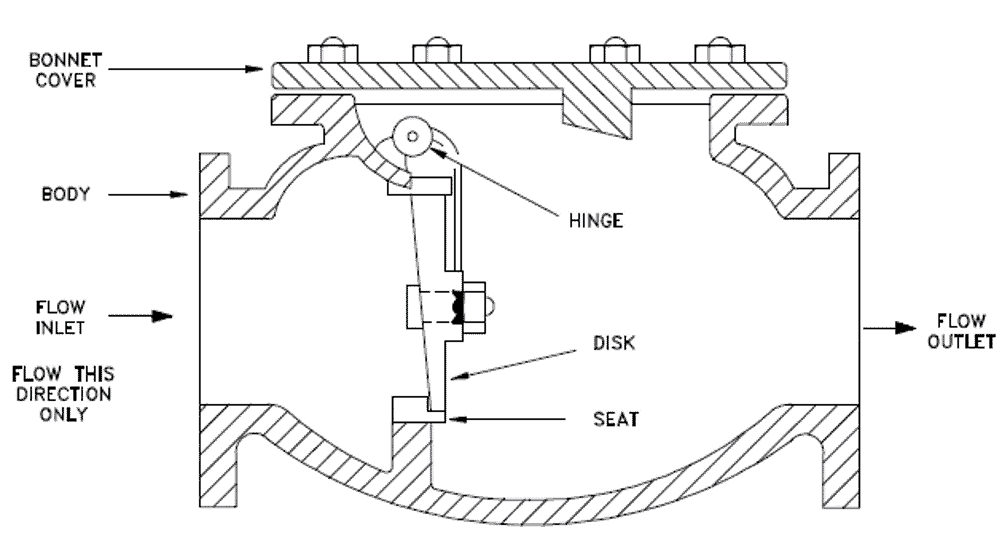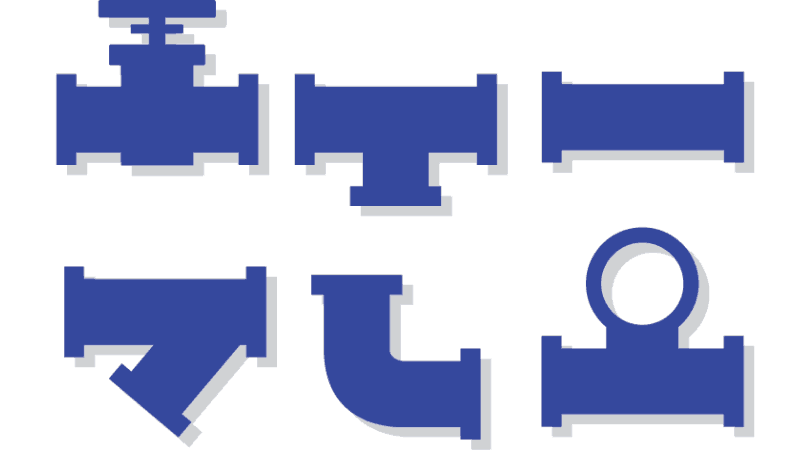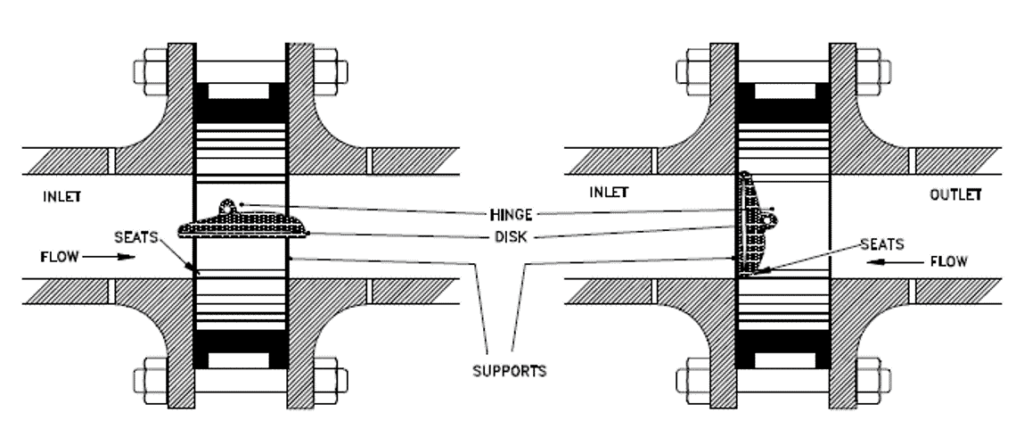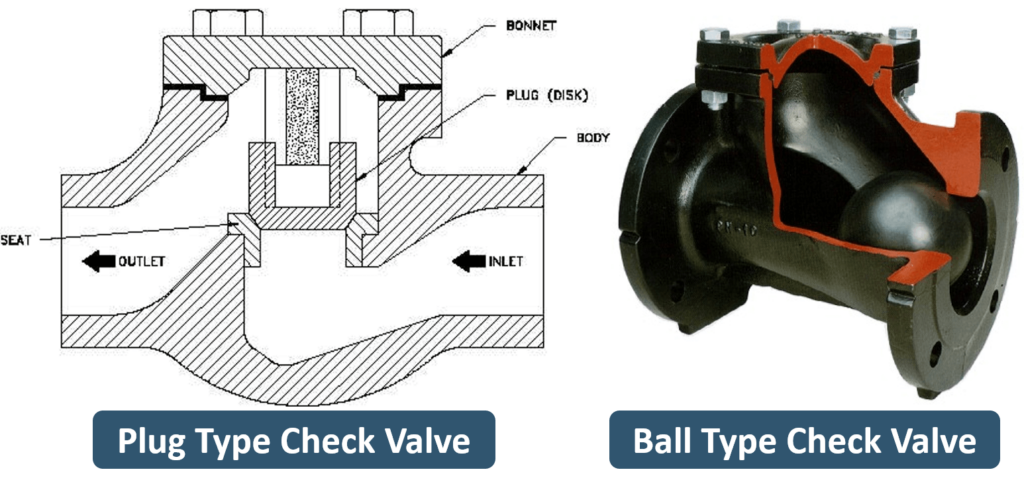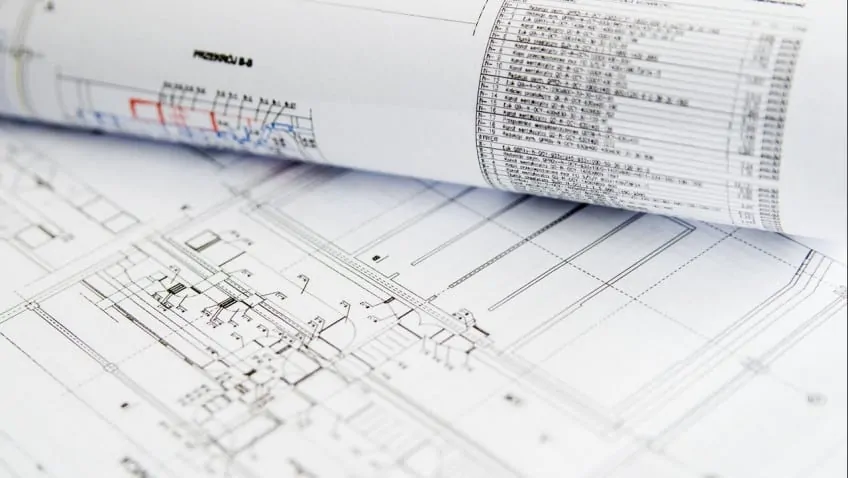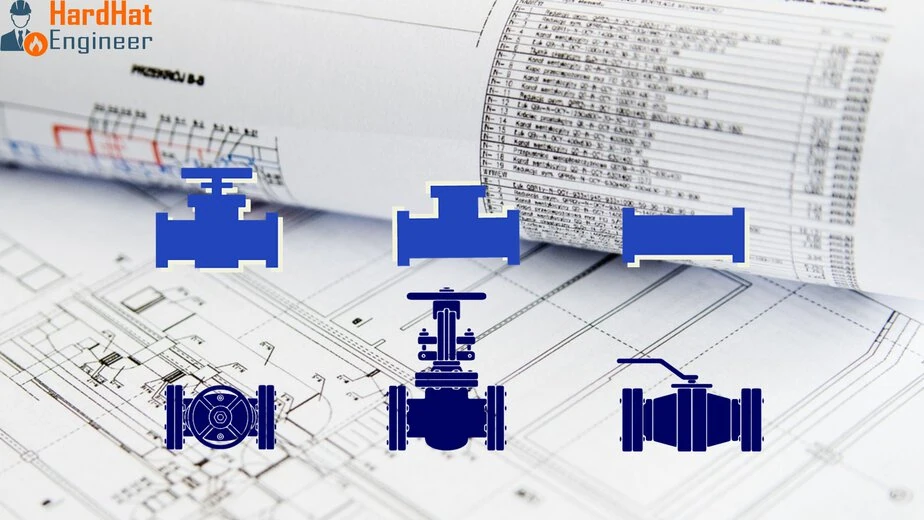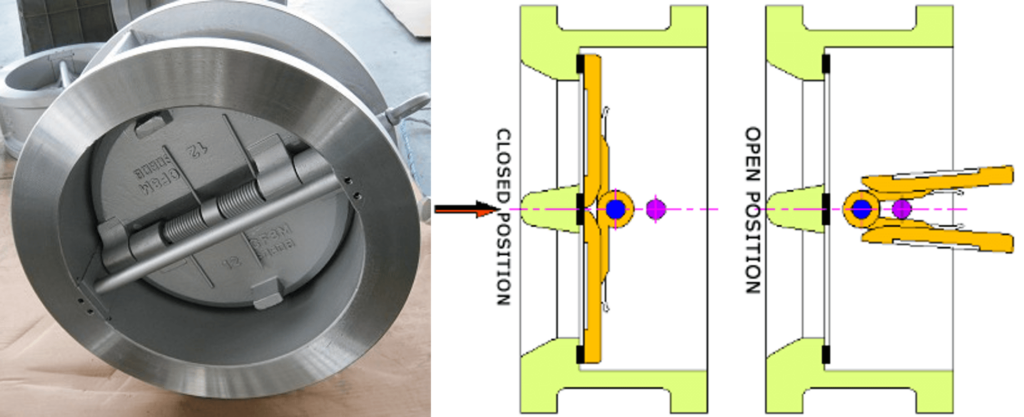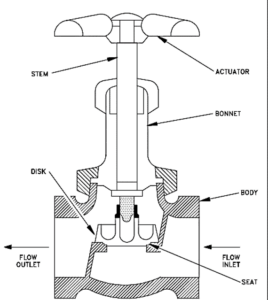What is a Check Valve?
The valve that is used to prevent backflow in a piping system is known as a check valve. It is also known as a non-return valve or NRV. The pressure of the fluid passing through a pipeline opens the valve, while any reversal of flow will close the valve.
It allows full unobstructed flow and automatically shuts as pressure decreases. The exact operation will vary depending on the mechanism of the valve.
Parts of Non-Return Valve
It consists of the body, cover, disk, hinge pin, and seat ring. In the image below, you can see the parts of the valve.
Unlock New Skills with Our Best Selling Online Courses
Image- TROUVAY & CAUVIN
Types of Valves
The type of disk will decide the type of valve. The most common types of Check valves are
- Swing Type.
- Top Hinged
- Tilting disk
- Lift Type
- Piston Type
- Ball type
- Dual Plate Type
- Stop Check Valve
Let’s learn about each of them.
Swing Check Valve
Image – DOE Handbook
The disc in a swing-type valve is unguided as it fully opens or closes. This Valve operates when there is flow in the line and gets fully closed when there is no flow. Turbulence and pressure drop in the valve is very low. Disk and seat designs can be metal to metal or metal to composite.
The angle between the seat and the vertical plane is known as the seating angle and varies from 0 to 45 degrees. Usually, the seat angles are in the range of 5 to 7 degrees. Larger seat angles reduce the disc travel, resulting in quick closing, thus minimizing the possibility of a water hammer. A vertical seat has a 0-degree angle.
Valve Quiz – Test yourself, Take This Quiz
Unlock New Skills with Our Best Selling Online Courses
The swing-type valve allows full, unobstructed flow and automatically closes as pressure decreases. Usually installed in combination with gate valves because they provide relatively free flow combinations.
A basic swing-type valve consists of a valve body, a bonnet, and a disk that is connected to a hinge.
Tilting Disc Check Valve
Image – DOE Handbook
The tilting disc-type valve is designed to overcome conventional swing-type valves’ weaknesses. The design of the tilting disk enables the valve to open fully and remain steady at lower flow rates and close quickly when the forwarding flow stops.
The dome-shaped disc floats in the flow and fluid flow on both the bottom and top of the disk surfaces. As the disk is spring-loaded, the spring force helps the valve close fast when forward flow pressure reduces. In the image above, you can see the flow from the valve.
Tilting Disc type Valve is available in wafer type and lug type design.
Ball Type and Plug Type Lift NRV
The seat design of a lift Check valve is similar to a Globe valve. A piston or a ball is usually used as a disk.
Lift Check valves are particularly suitable for high-pressure service where the velocity of flow is high. The disk is perfectly set on the seat with full contact. They are suitable for installation in horizontal or vertical pipelines with upward flow.
When the flow enters below the seat, a disk is raised from the seat by the pressure of the upward flow. When the flow stops or reverses, the backflow and gravity force the disk downward to set on the seat. Commonly used in piping systems that used globe valves as a flow control valve.
You can see the plug or piston type and ball type check valve here. These valves provide superior leak-tight characteristics to those of swing check valves.
Some design in plug type uses spring to retain the disk in a closed position. This will ensure that the valve allows fluid flow only when there is enough pressure in the flow direction.
A ball-type valve is very simple as it works on the gravity principle. When there is enough pressure in the flow, it lifts the ball upward, but when pressure is reduced, the ball rolls down and closes the opening.
Unlock New Skills with Our Best Selling Online Courses
Dual Plate / Dual Disc Check Valve
A dual plate check valve is known as a butterfly check valve, Folding Disc Check valve, double-disc, or splits disc check valve. As the name suggests, two halves of the disk move towards the centreline with the forward flow, and with reverse flow, two halves open and rest on the seat to close the flow (Flapping action).
The use of the Dual Plate Check Valve is popular in low-pressure liquid and gaseous services. Its lightweight and compact construction make it a preferable choice when space and convenience are important.
It is 80 to 90% lighter than the conventional full-body check valve. Frequently used in systems that used butterfly valves. The cost of installation & maintenance is very low compared to other types.
Stop Check Valve
Image- DOE Handbook
Stop Check Valve is a combination of a lift check valve and a globe valve. It can either be used as a check valve or as an isolation (stop) valve like a globe valve. These valves can be closed with the help of a stem that is not connected to the valve disc during normal operation, making it possible to use these valves as a regular NRV.
However, the stem is used when needed to hold the free-floating disc against the valve seat, just like a globe valve. These valves are available in tee, wye, and angle patterns. Swing and piston lift valves are commonly used as stop check valves.
Application of Check Valve (NRV)
Check valves (Non-return valves) are used in a piping system to prevent backflow. The rotary equipment’s discharge line, such as the pump and compressor, is always fitted with a check valve to prevent backflow.
Advantages & Disadvantages
Can you guess why I have not mentioned any advantages or disadvantages of the check valve?
The only function of a Non-return valve is to prevent backflow. There is no better alternative. Yes, you can choose the best NRV from the various available type that you have learned, but you cannot supplement the Non-return valve with another valve.
Click here to learn about Other Types of Valve
Unlock New Skills with Our Best Selling Online Courses
